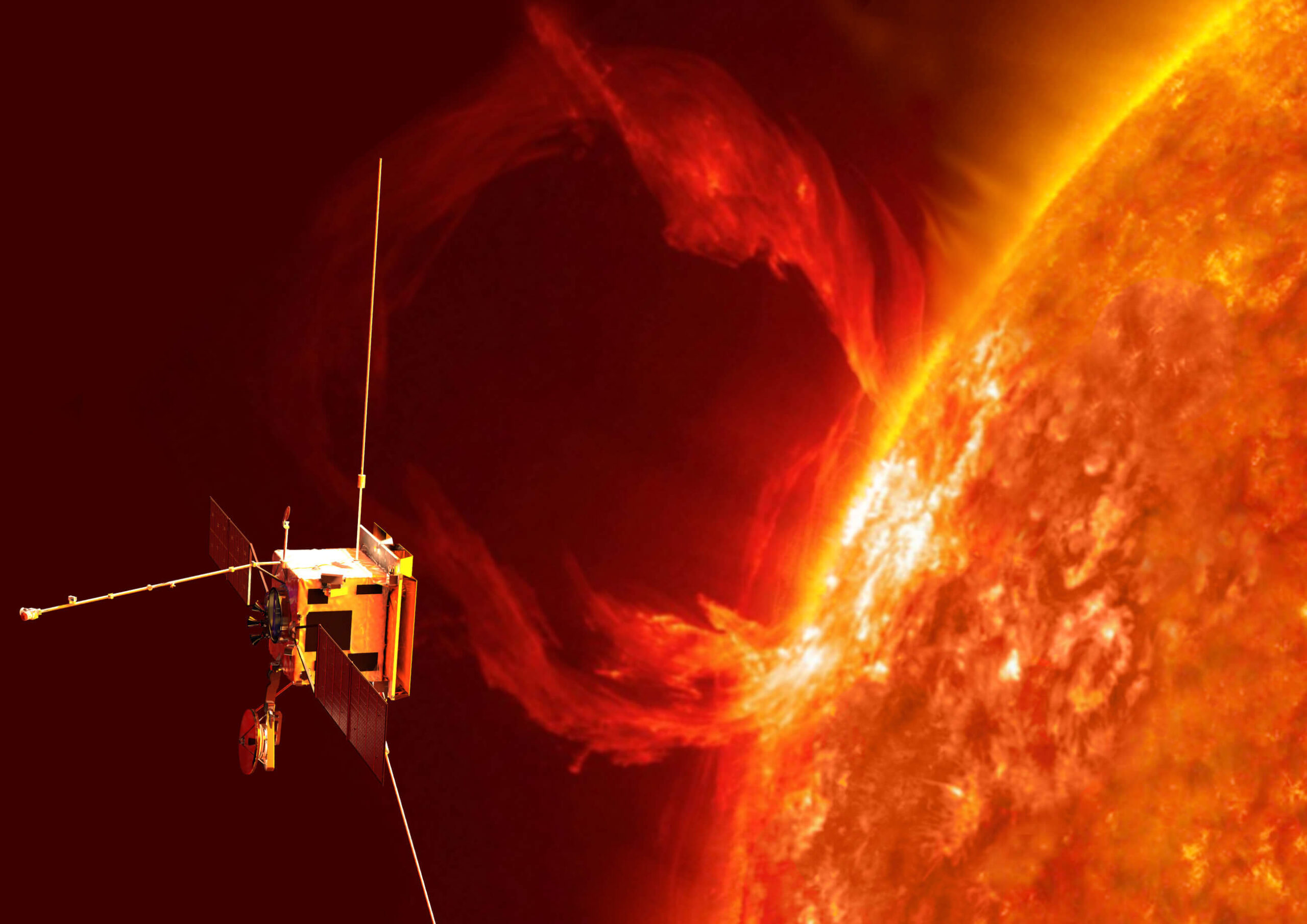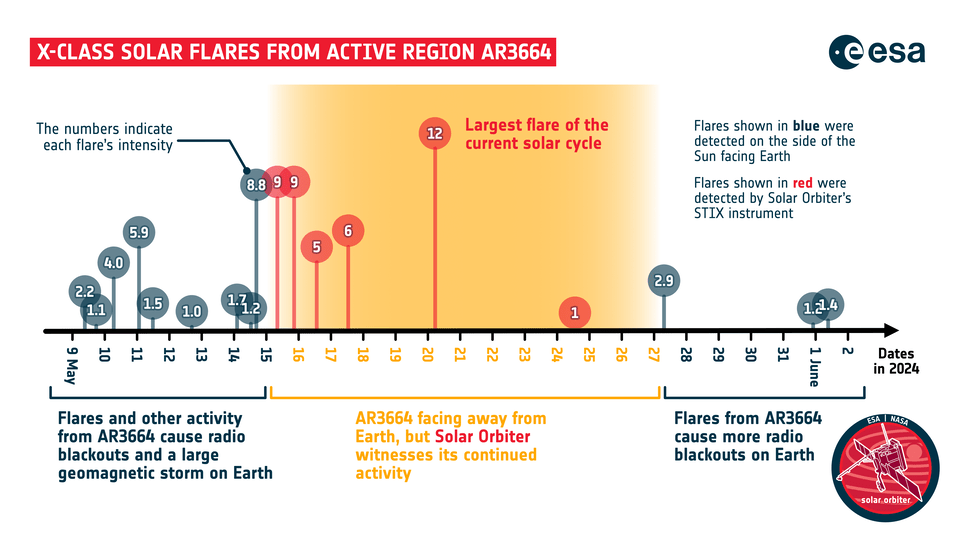Can’t stop won’t stop: Solar Orbiter shows the Sun raging on


The hyperactive sunspot region responsible for the beautiful auroras earlier in May was still alive and kicking when it rotated away from Earth’s view. Watching from the other side of the Sun, the ESA-led Solar Orbiter mission detected this same region producing the largest solar flare of this solar cycle. By observing the Sun from all sides, ESA missions reveal how active sunspot regions evolve and persist, which will help improve space weather forecasting.
In the weekend of 10–12 May 2024, the biggest solar storm to hit Earth in over 20 years swept over our planet. This produced an intense geomagnetic storm, creating beautiful auroras which lit up the sky at much lower latitudes than usual.
The culprit? An active sunspot region called AR3664. As it rotated away from Earth’s view around 14 May, it sent out the strongest flare yet (class X8.79), causing large radio blackouts on Earth. But the fact that we could not see it anymore from Earth did not mean that this monster had gone to sleep.
Watching the Sun’s far side on 20 May, Solar Orbiter’s X-ray instrument STIX observed a massive flare with an estimated class of X12. “This makes it the strongest flare yet of the current solar cycle, and in the top ten flares since 1996,” says ESA research fellow Laura Hayes.
X-class flares are the highest category of solar flares, and the higher the number following the X, the stronger the flare.

Watching the Sun from all sides
Most missions studying the Sun watch the side facing Earth, but Solar Orbiter is taking a different route through the Solar System. Because of the way the spacecraft moves with respect to Earth, Solar Orbiter is currently observing the Sun’s far side for more than four months.
“Solar Orbiter’s position, in combination with other missions watching the Sun from Earth’s side, gives us a 360-degree view of the Sun for an extended period of time. This will only happen three more times in the future of Solar Orbiter, so we are in a unique situation to observe active regions on the far side that will then rotate into Earth’s view,”
explains Daniel Müller, Solar Orbiter Project Scientist at ESA.
Physikalisch-Meteorologisches Observatorium Davos PMOD/WRC
Dorfstrasse 33
7260 Davos
